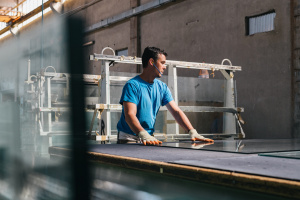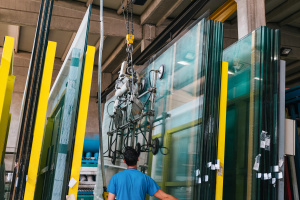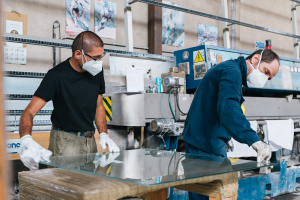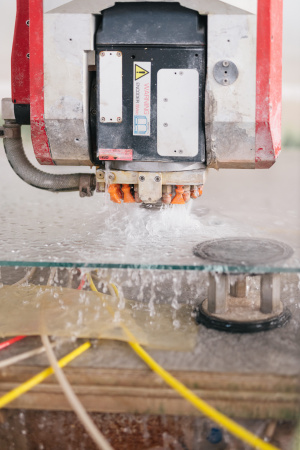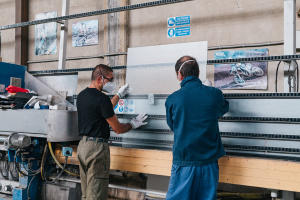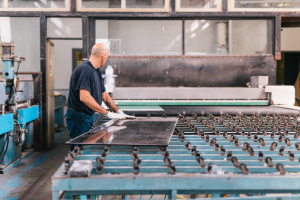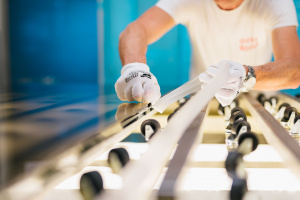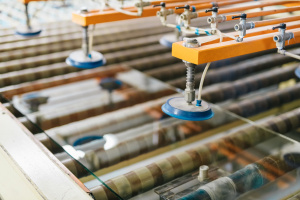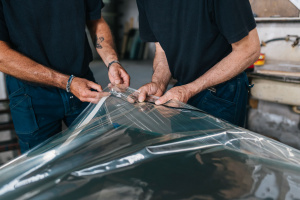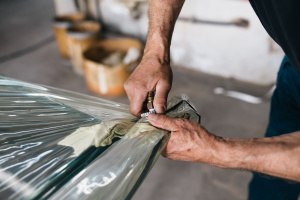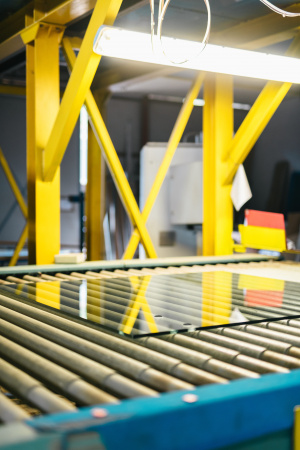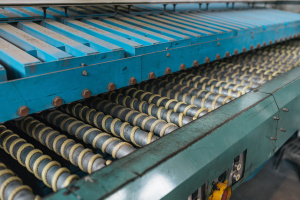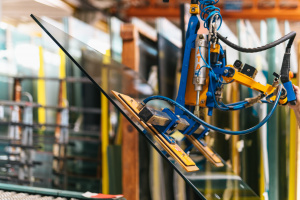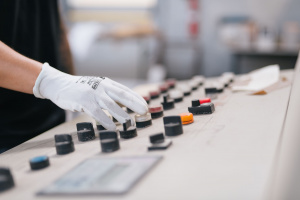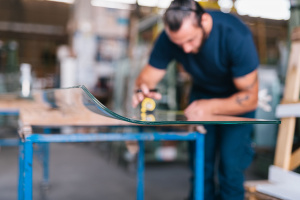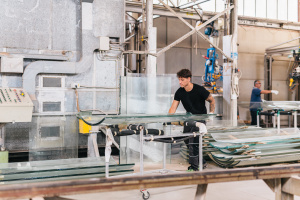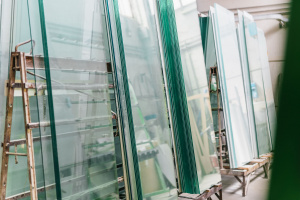Processing
We deal with all main types of glass processing, but we also like to experiment and innovate. Depending on the characteristics required and the use of the finished product, we combine the necessary processes to obtain the best result.
CUTTING
We cut glass sheets with a computerized cutting bench. This numerically controlled machine optimizes the cutting of the slabs, reducing considerably the production of scraps.
The software gives the instructions to the glass cutter, which is equipped either with either a tungsten carbide or synthetic diamond wheel. The laser glass cutter acquires the exact position of the slabs, which is fundamental to ensure precise cutting.
Once engraved, the slabs are detached by our employees and then sent to the grinding department.
GRINDING
Cut glass has sharp and irregular edges, which are ground with numerically controlled machines. Grinding evens out the edges, giving the desired result: round polished, flat polished or rough.
We can also grind irregularly shaped glass slabs with a numerically controlled machine, which is also connected to milling cutters capable of producing the required finishes. The mechanical arm can be set according to the types of cut and finish desired.
LAMINATION
After being washed and dried, the slabs used to make laminated glass are placed in an assembly chamber, where a sandwich of two or more glass slabs is mechanically made using one or more sheets of pilivinylbutyral (PVB).
Next are the heating and pressing phases, which are carried out with two rubber rollers. Our lamination process includes also a further autoclave phase to achieve maximum glass transparency.
This assembly technique allows us to make compact and durablee laminated glass . We can also customize glass by embedding colored or pre-printed PVBs with artistic textures, but also materials such as metal mesh, eco-leather or marble.
THERMAL TEMPERING
Thermally-tempered glass is heated to high temperatures and then rapidly cooled with air jets.
This process hardens the surface layers, leaving the inner part of the glass warm for a longer time. The internal tension that develops gives the slab the typical resistance of tempered glass.
Tempered glass is about six times stronger than float glass. For this reason, it is often used to make either glass elements with no supporting structure or safety applications.
CHEMICAL TOUGHENING
Cemical toughening does not require very high temperatures, which reduces the risk of glass distortion o breaking. This characteristic makes this solution ideal for complex shapes.
The slabs are immersed in a tank containing molten potassium salts, where an ion exchange occurs - between the sodium ions of the surface layers and the potassium ions.
Depending on the length of the immersion - between 20 and 40 hours - glass resistance can become five times higher compared to thermally-hardened glass. Chemically hardened glass is also totally free of optical distortions, which makes it very desirable in the automotive and boating industries.
In terms of chemical hardening, Roberglass was one of the first glassworks to acquire a special oven capable of hardening 3.20 x 1.80 m. slabs.
CURVED GLASS
Curved glass is made in furnaces of various sizes, which depend on the size of the slabs. The slab is placed on top of a shaped metal mold. The heat of the furnace heats the glass, which begins to collapse and take on the shape of the mold.
To achieve large radii of curvature or two-ax curvatures, we use metal molds with central joints, which allow to gradually bend the slab. After heating and bending, the glass is cooled very slowly to avoid tensions, which may otherwise cause breakage.
Roberglass is a specialist in the production of curved glass for various purposes and industries, such as construction, boating and safety. Thanks to our workshop we can also internally produce the molds for the bending process.



